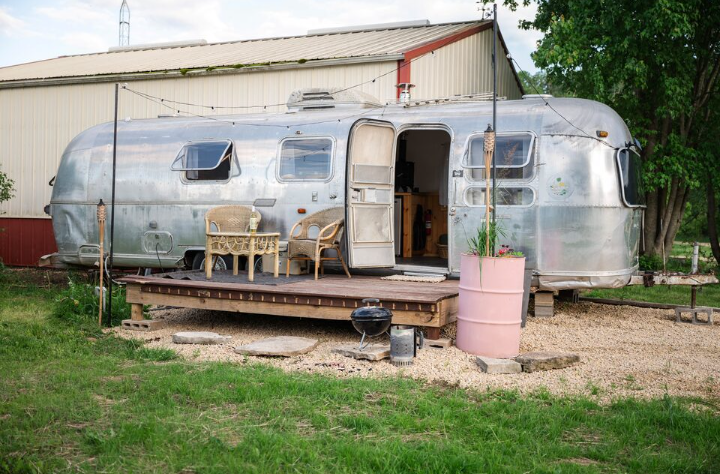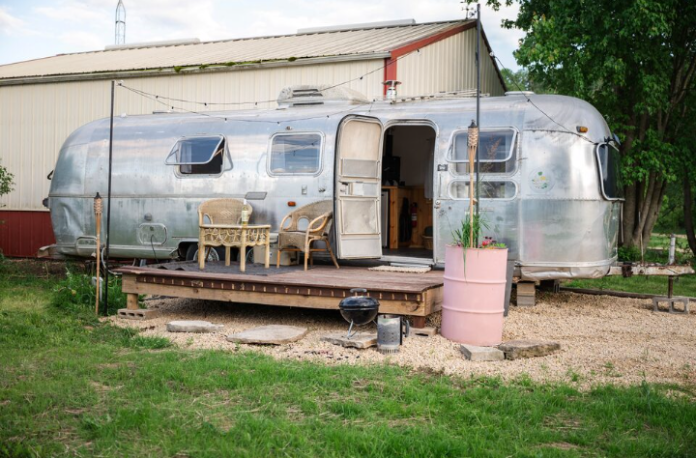In the heart of rural Wisconsin, a dirt road leads to Pink River Ranch, where Highland cattle graze, Icelandic sheep roam, and a vintage Airstream trailer welcomes city dwellers seeking a countryside escape. For farm owner Brit Thompson, listing her farm on Airbnb has been a financial lifeline amid declining crop prices and market instability.
Like many U.S. farmers, Thompson is embracing agritourism—a $4.5 billion industry, according to the U.S. Department of Agriculture (USDA)—to supplement traditional farming income. From farm stays and hayrides to pumpkin patches and pick-your-own orchards, agritourism has grown into a vital revenue stream, allowing farmers to endure volatile markets and rising operational costs.
Why Farmers Are Turning to Agritourism
Crop prices have taken a hit, with corn and soybeans reaching four-year lows in 2024. At the same time, farmers face high interest rates, expensive fertilizers, and increasing labor costs. According to the USDA, farm income has dropped 23% from 2022, marking one of the steepest declines in history.
Agritourism offers a much-needed financial cushion. Farmers who integrate tourism into their operations can earn anywhere from $25,000 to $100,000 annually, with some surpassing $1 million, says Lisa Chase, an extension professor at the University of Vermont.
Platforms like Airbnb, HipCamp, Harvest Hosts, and The Dyrt have fueled this growth, with farmstay listings on short-term rental platforms surging 77% in the last five years, according to data firm AirDNA.
How Agritourism Is Reshaping Farming
Farmers across the country are redefining their business models to attract visitors. At Heap’s Giant Pumpkin Farm in Illinois, guests can pick sunflowers, ride hay wagons, and navigate corn mazes—all while supporting a farm that also grows corn and soybeans for export.
For some, agritourism has become as important as traditional farming. Catherine Topel, a North Carolina hog farmer, says renting out cabins and campsites through HipCamp has made her farm more financially resilient. “You can’t survive as a family farm just by farming,” she explains.
Beyond financial stability, agritourism helps keep farms within families. Younger generations, drawn to entrepreneurship and digital marketing, are more willing to manage guest accommodations and social media than track grain futures or monitor soil moisture.

A Sustainable Future for Family Farms
While agritourism isn’t feasible for every farm—due to location, regulations, or personal preferences—it offers a way for many to sustain their operations and maintain ownership. Farmers also enjoy sharing their lifestyle with visitors, teaching sustainable practices, and inspiring a new appreciation for rural life.
For Brit Thompson, her farm’s Airbnb rental has not only provided financial security but also created lasting memories for guests. Whether fishing by the river with her daughter or welcoming city dwellers eager to experience farm life, she sees agritourism as more than a business—it’s a bridge between urban and rural communities.
As economic pressures on agriculture persist, more farmers may look beyond traditional farming and embrace innovative solutions like agritourism. It’s not just about survival—it’s about adapting to a changing world.



